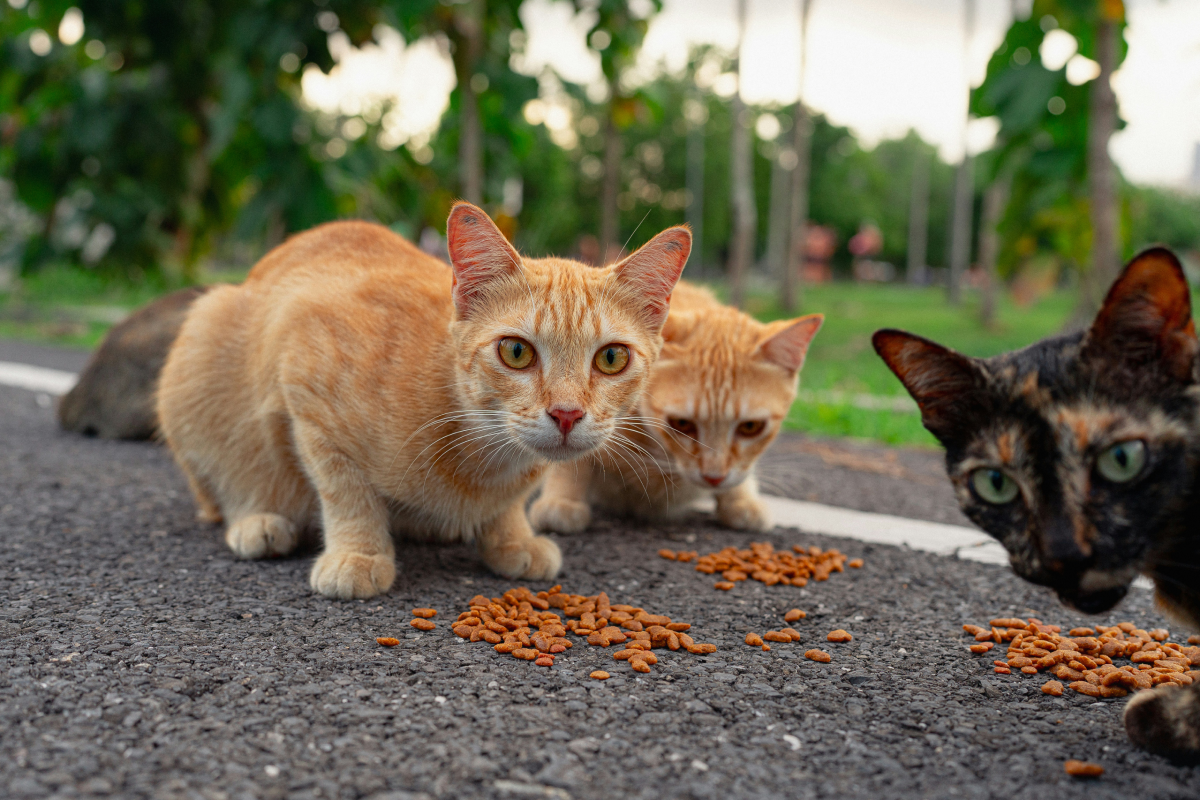📖 Table of Content:
They dart through alleyways, huddle beneath porches, and give birth under dumpsters. Millions of stray cats roam America’s cities, suburbs, and countrysides—largely invisible, often ignored, and desperately in need of help. While some of us may see a wandering cat and smile at its independence, the truth is far grimmer: these felines are not living free—they’re surviving day by day in dangerous, often heartbreaking conditions.
From overcrowded shelters to exploding feral colonies, the stray cat problem has spiraled into a full-blown crisis in several U.S. states. Shelters are at capacity. TNR programs are overwhelmed. And in some regions, the situation is so out of control that even well-meaning efforts can’t keep up.
So, where are the hot spots of this crisis? Which states are seeing the biggest feline surges—and how are they fighting back?
Let’s take a closer look at the states where the stray cat crisis has reached critical mass, and the creative solutions that may offer a way out.
1. California
Golden State shelters are bursting at the seams with an estimated 3 million stray cats roaming streets from San Diego to San Francisco. The mild climate creates perfect breeding conditions year-round, resulting in exponential population growth.
Urban areas like Los Angeles face particular challenges, with alleyways and abandoned buildings becoming makeshift cat colonies. Local rescues report intake numbers climbing steadily each year despite increased spay/neuter efforts.
The situation has prompted innovative solutions, including large-scale TNR (Trap-Neuter-Return) programs and community cat initiatives where volunteers manage outdoor colonies while preventing reproduction.
2. Florida
Sunshine and year-round warmth make Florida a breeding paradise for homeless cats. Experts estimate over 2 million strays prowl the peninsula state, with coastal communities particularly overwhelmed. Hurricane seasons regularly displace owned cats, adding to the stray population.
Miami-Dade County alone reports over 300,000 homeless felines, with animal services unable to keep pace. The situation worsens in tourist areas where abandoned pets from seasonal residents compound the problem.
Florida’s unique ecosystem faces additional threats as these predators impact native wildlife, particularly endangered bird populations in sensitive ecological areas like the Everglades.
3. Texas
Everything’s bigger in Texas—including the stray cat problem. Rural areas and sprawling cities alike grapple with approximately 2.5 million homeless cats across the Lone Star State. Farm communities see “barn cat” populations explode without intervention, while Houston and Dallas shelters operate perpetually at capacity.
The vast geography creates unique challenges for cat rescue efforts, with some rural communities lacking access to affordable spay/neuter services. Many Texas shelters face euthanasia rates above national averages due to overwhelming intake numbers.
Community outreach programs now target underserved areas with mobile veterinary clinics and education about the importance of sterilization.
4. New York
From Brooklyn alleys to upstate barns, New York State harbors nearly 1.5 million homeless cats. The Empire State’s diverse landscape creates contrasting challenges—Manhattan’s cramped spaces foster dense colonies while abandoned rural properties become magnets for multiplying ferals.
Winter presents deadly challenges for street cats seeking warmth in car engines or building crevices. Dedicated volunteer networks construct shelter stations throughout NYC boroughs, providing insulated homes during freezing months.
The state pioneered many community cat programs now replicated nationwide, with neighborhood “cat caretakers” monitoring colonies and ensuring all members are trapped, neutered, and returned to prevent population growth.
5. Illinois
Chicago’s famous winds blow through streets where approximately 1.3 million homeless cats struggle to survive harsh Midwestern seasons. The dramatic temperature swings from freezing winters to sweltering summers create tremendous hardship for street cats lacking proper shelter.
Abandoned industrial areas throughout Illinois have become havens for large feral colonies, with some locations housing hundreds of cats. The state’s mix of dense urban centers and sprawling rural communities creates diverse challenges for rescue organizations.
Recent legislative efforts have strengthened TNR programs, with some municipalities providing funding for community cat management instead of traditional impoundment approaches that proved ineffective and costly.
6. Pennsylvania
Approximately 1.2 million homeless cats roam Pennsylvania’s cities and countryside, with Philadelphia and Pittsburgh facing particularly severe concentrations. The state’s aging infrastructure provides countless hideaways in abandoned buildings and overgrown lots where cats reproduce unchecked.
Rural areas struggle with “dumping” – unwanted cats abandoned along country roads by urban dwellers. These cats form colonies around farms and wooded areas, often lacking human interaction and proper veterinary care.
Pennsylvania shelters have pioneered creative adoption programs, including “working cat” placements, where semi-feral cats find homes in barns, warehouses, and breweries as environmentally-friendly rodent control alternatives to chemicals.
7. Ohio
Buckeye State animal shelters face constant pressure with approximately 1.1 million homeless cats throughout Ohio. The state’s mix of urban centers and agricultural communities creates diverse challenges for cat management efforts.
Cleveland, Cincinnati, and Columbus all report shelter systems operating beyond capacity year-round. Many rural counties lack resources for comprehensive spay/neuter programs, allowing populations to multiply unchecked in farming communities.
Weather extremes pose serious threats to outdoor cats, with winter temperatures regularly dropping below freezing. Community initiatives have emerged to provide insulated shelters and feeding stations, while rescue organizations work to place adoptable cats and manage stable outdoor colonies.







